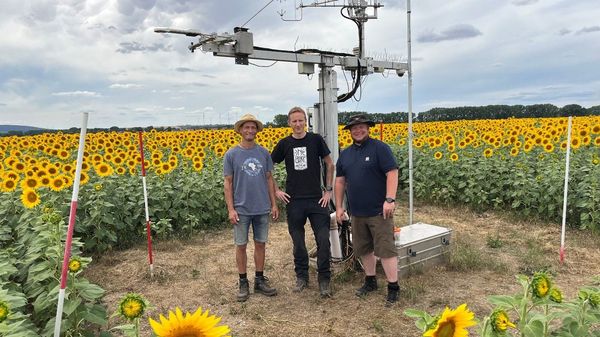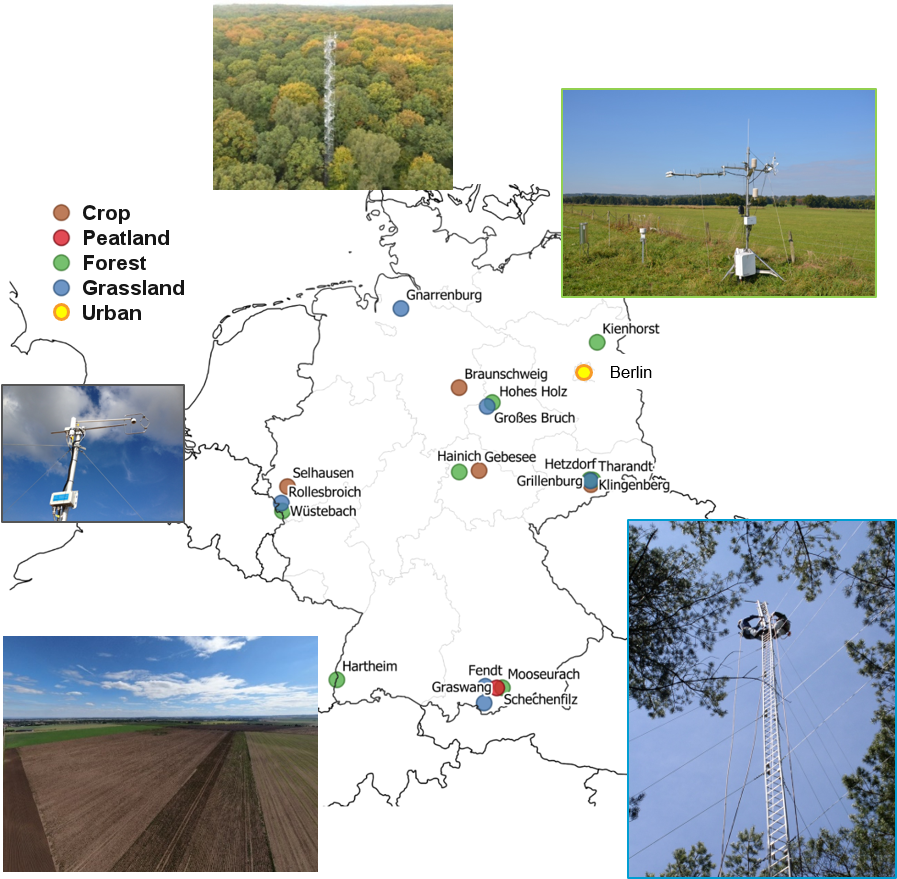Research Infrastructure for Greenhouse Gas Monitoring – ICOS
Standardized Greenhouse Gas Monitoring in Europe
Contact: Christian Brümmer
Climate protection knows no national borders. The “Integrated Carbon Observation System (ICOS)” is a European research infrastructure for the long-term observation of greenhouse gases with over 170 stations in 16 member states across Europe (as of 2023). Continuous and high-quality measurements are carried out at the observation sites, following a standardized protocol. This ensures Europe's leading position in climate and greenhouse gas research in the long term. This is done through a well-coordinated network of national contributions linked by central institutions at the European level.
We coordinate Germany's contribution to the European greenhouse gas network ICOS. The German network partners measure the greenhouse gas concentrations in the air in the Atmosphere domain, in the Ecosystem domain they investigate sources and sinks of greenhouse gases in forests, grasslands, croplands, croplands, and urban areas and in the Ocean domain they examine the exchange of trace gases between the atmosphere and the ocean.
- Greenhouse gas measurements are carried out according to standardized measurement protocols.
- Data sets (e.g., greenhouse gas fluxes, soil and vegetation information) are publicly available via the ICOS Carbon Portal.
- The German consortium is supported by universities, research centers as well as federal and state authorities and includes 20 partner institutions.
In the area of terrestrial ecosystems, ICOS data is used to analyze the effects of land management and climate on GHG fluxes as well as the causes of their changes over time. We operate eddy covariance measurement stations at a crop and a grassland site. Using the eddy data, the carbon balances of these locations are compiled, taking into account carbon import and export (e.g., through harvesting and organic fertilization), and compared with soil inventories.

![[Translate to English:] [Translate to English:]](/media/_processed_/6/4/csm_titel_CO2Kampagne8_afeea2273e.png)
![[Translate to English:] [Translate to English:]](/media/_processed_/4/1/csm_titel_93px_CO2Kampagne8_9b0f3354d4.png)







